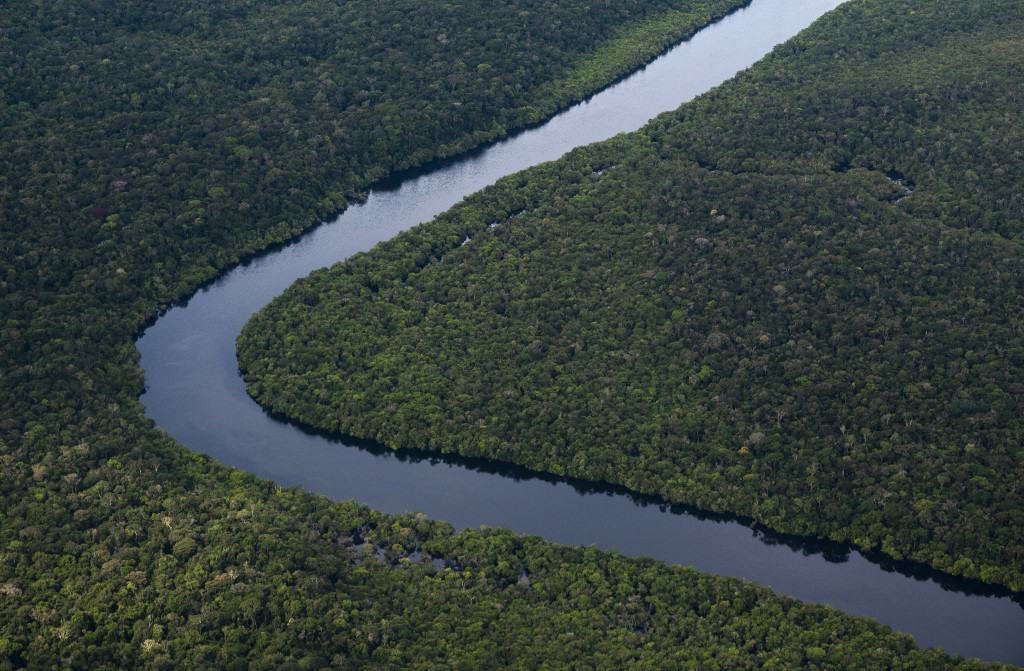In a remote and still preserved jungle of the Brazilian Amazon, a scientific expedition has been cataloguing biodiversity and searching for new species for days. Time is pressing.
“The rate of devastation is greater than the rate of knowledge,” says Francisco Farroñay, of Brazil’s Amazon Research Institute (Inpa) before making an incision in the bark of a huge tree and sniffing its interior.
The fears of this young Peruvian botanist are based on two conflicting realities: while the planet’s largest rainforest is being ravaged at a forced march by deforestation and arson for agribusiness, mining and illegal timber trafficking, its infinite biodiversity remains a great mystery to science.
“It’s a struggle against time,” he says.
To reach this place in the south of the state of Amazonas, considered the most preserved of the nine in the Legal Amazon, you can take a small plane from Manaus, fly over hundreds of kilometers of green mantle with meandering rivers to Manicoré, a municipality of almost 50,000 km2, and travel by boat for five hours through the black waters of the river of the same name, among lush flooded jungles, the igapós.
At the beginning of June, an expedition organized by Greenpeace, with fifteen scientists like Farroñay, arrived here to inventory the fauna and flora and to support a long-standing demand of the traditional communities living on the banks of the river: to become a Sustainable Development Region (RDS), a category of conservation unit that would serve to curb the growing environmental crimes in their environment.
For several weeks, specialists in mammals, birds, amphibians, reptiles and fish went deep into the jungle to collect plant samples and detail animal behavior, for which they installed cameras and microphones.
We’re never going to meet him
Ironically, on the newsprint that a botanist in the group uses to press a flower can be read this headline, “Increase in timber exploitation in the (state) Amazon,” over a photo of two trucks leaving the jungle loaded with huge logs.
“Most of the plant species in the Amazon are distributed in small areas. If we don’t know 60% of the tree species, any region that is deforested is eliminating a part of the biodiversity that we will never know,” claims Alberto Vicentini, researcher at INPA.
According to a Mapbiomas study released in September last year, the Amazon lost between 1985 and 2020 some 74.6 million hectares of original vegetation, an area equivalent to the entire territory of Chile.
The phenomenon worsened during the government of the far-right Jair Bolsonaro, whom environmentalists accuse of encouraging the deforestation of this vital rainforest to curb climate change, with his policies and rhetoric in favor of agribusiness, of turning a blind eye to violators and cutting the resources of environmental control agencies.
Since he took office in 2019, average annual deforestation in the Brazilian Amazon increased 75% over the previous decade, according to official figures.
“In addition, we live in a moment of denial of science, as we saw with the pandemic in Brazil, a tremendous obscurantism. The institutions that promote research in Brazil are being attacked by the policies of this government, the universities are suffering many cuts,” adds Vicentini.
Walking backwards
At another point on the Manicoré River, whose waters reflect the canopies of trees flooded at this time of year, a canoe slowly enters an ‘igarapé’, an arm of crystalline water that runs inside the closed forest.
From it jump three fish biologists, who dive with small nets to study whether the fish in these waters are different from those in the main river.
“There are places where no one has ever been, we have no idea what is there. Without resources for research, we don’t have the information we need to explain why we need to preserve,” explains Lucía Rapp Py-Daniel, PhD in Ecology and Evolutionary Biology.
Research has been losing resources for a decade.
In May, Brazil’s two main scientific societies, the Brazilian Academy of Sciences (ABC) and the Brazilian Society for the Advancement of Science (SBPC) warned that this year there will be a cut of almost 3 billion reais (about USD 560 million at the current exchange rate) in scientific research.
“We should accelerate the pace of research to be on time before the destruction, but we are walking backwards,” Py-Daniel laments.

